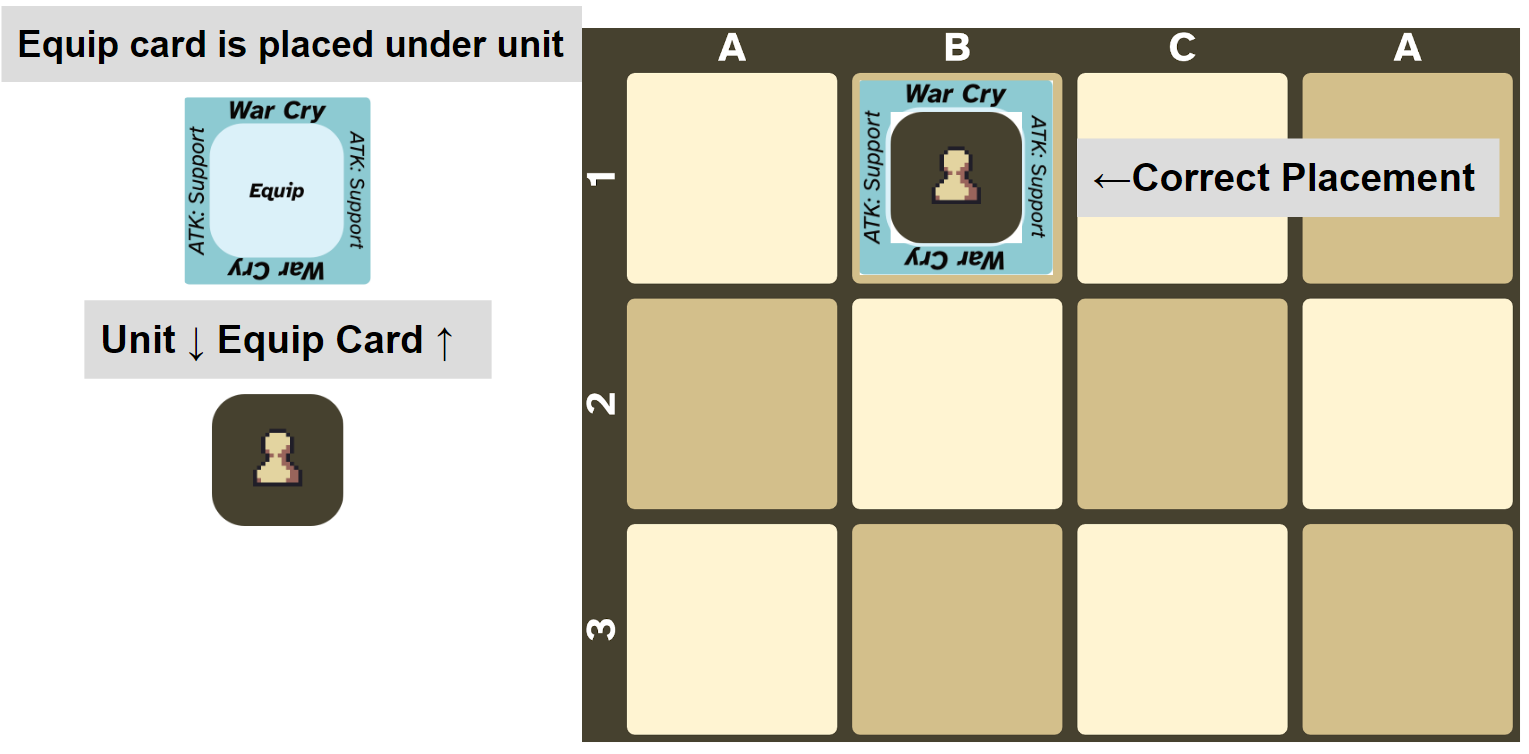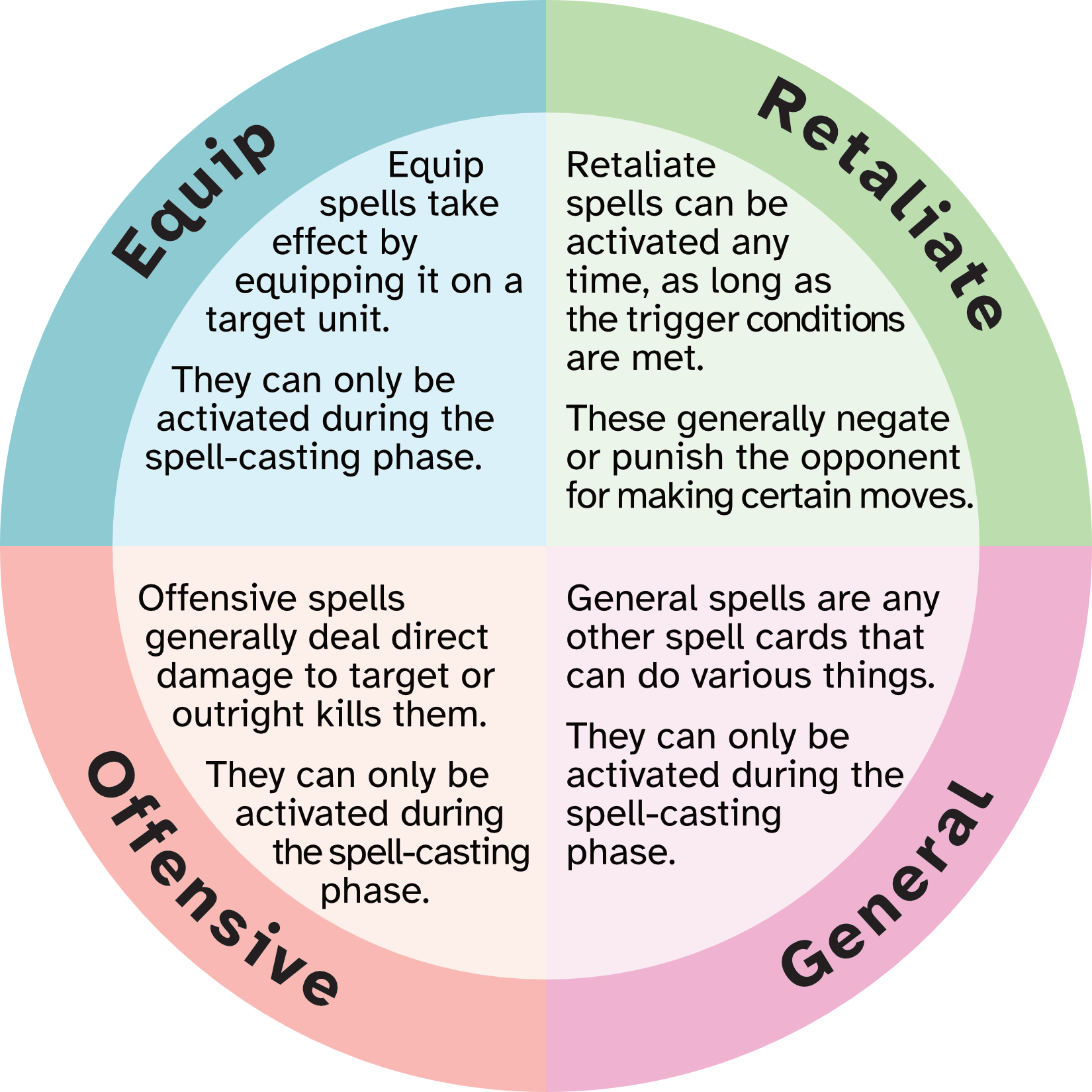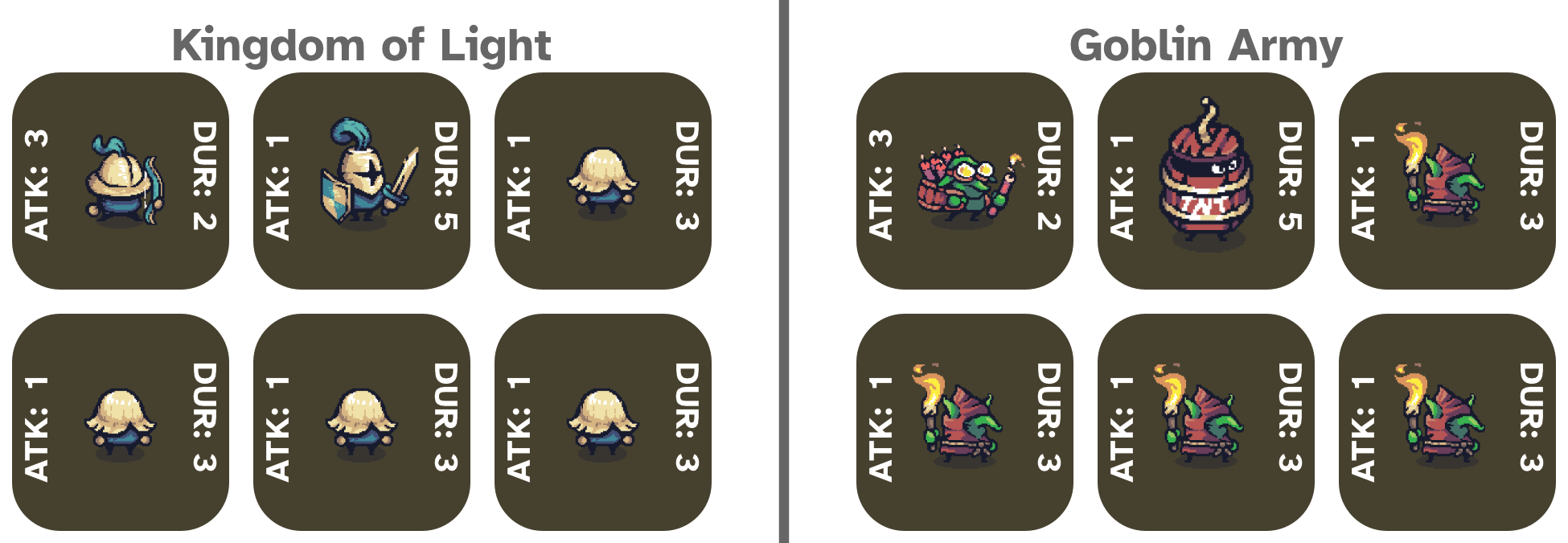Background
My next project in unit 3 was a little different as we had to pitch game ideas and we can choose our partners based on what concept interests us. My pitch was what if a game like Conway’s Game of Life had players? Basically instead of having the player control the outcome of a game directly, they define a set of instructions or rules that a large set of automatons follow autonomously. Following my pitch, Mason reached out to be my partner with the pitch that there were two wizards battle it out by playing and casting spells cards. Together we made up group 2.
First idea
Thinking about our ideas, my idea immediately seemed too complicated and out of scope for our class. However, Mason’s idea also seemed a little too generic and traditional. I suggested a compromise between the two set of rules where players would be either one of two wizards, the Wizard of Light or the Necromancer of Darkness. The Wizard of Light would support an army of automaton constructs and golems while the Necromancer of Darkness controls an army of the undead. However, this concept still felt a little complex, so I had to see whether I can actually make a reasonably understandable set of rules first.
When coming up with the rules concept, I envisioned that players would play on a board resembling a chess board. I wanted to create a spell that was equippable to each troop unit. I settled on a concept where pieces were square shaped while cards were slightly larger. The border of the card would highlight the effect of the card on the unit. This way, when the player places the card on the unit, they can see the effect of the card on the unit. Also since I was thinking of using a layout similar to a chess board, I decided to lean into using chess pieces as the units.

I managed to come up with a simple set of rules by breaking down each round into phases.
- Draw Phase: Players draw a card from their deck
- Movement Phase: Players can move their units
- Spell-casting Phase: Players can play a card from their hand
- Attack Phase: Players can attack with their units
In order to not have to deal with balancing for the first player’s turn, I decided that both players play simultaneously. Players draw at the same time, then they can move each of their troop units one space, cast spells, and finally attack. I also suggested that only the front-most units attack each other at the same time. This way, even if a unit were to die that turn, it still deals damage to the opponent’s unit. I also wanted to differentiate this game from some of it’s inspirations like Magic the Gathering and Yu-Gi-Oh by removing the concept of direct attacks and life points. Instead, the game would be won by destroying all of the opponent’s units.
The last part to figure out were the rule cards and their effects. I settled with 4 types of spell cards:
- Offensive spells: These cards would deal damage to enemy units or destroy them
- Equipment spells: equipped to a troop by placing them underneath the troop to give them various buffs and abilities
- General spells: These cards would have other various effects like healing, drawing cards, or moving units
- Retaliate spells: These cards would be played in response to an enemy’s action, usually to negate or punish the opponent for their actions
Most of these spells were activated only during the spell phase. The Retaliate spells were an exception as they are played when a specific condition is met. Equip spells were also special because they were sized to fit under a troop unit. This way, players can see the effect of the card on the unit.
Play-testing
We were happy to hear that, for the most part, people enjoyed the game’s concept. Some general criticisms we received were that the coloring of the spell cards didn’t make sense to some as the rule sheet hadn’t mentioned them, and that the usage of chess pieces didn’t fit the theme of wizards.
We were able to address the first issue with the following diagram which made it more obvious that the color of the spell card corresponded to the spell card type.

For the second issue, we decided to look for a new set of assets to fit the theme of the game. We were struggling to find a consistent asset pack that included everything we wanted in a consistent style (and that was licensed for us to use), until I found Tiny Swords by Pixel Frog. The assets weren’t necessarily wizards but there were 3 different types of knights and 3 different types of skeletons that we decided to switch the concept to the Kingdom of Light vs the Goblin Army.

The one thing we forgot to do was change the name of the game to reflect the new theme. Oh well…
The design of the game
As our class consisted of several groups of 2 partners working on their own games, we designed the game to target two players. It follows a player-vs-player play-style as both players battle each other. It was designed for those who enjoy strategy games, especially for the “craftsman” player type, as each player tries to organize their troops to outmaneuver and beat their opponents. They also try to gain the edge by playing spell cards to turn the tide of battle in their favor. On the other hand, this game also targets the “competitor” player type as the goal of the game is to become stronger and obliterate and dominate the opponent’s army. Because of the game’s complexity, it is also targeted towards college students who are looking for a more challenging game, however it still remains relatively straightforward as to not overly confuse other people.
Conclusion
In this class, this project felt the most successful, fluid, and fleshed out idea. Part of that was thanks to my partner. Compared to my previous partners, my partner for this project would often do research that I do not normally do. They would conduct their own play-tests and compile the feedback for me to improve the rule-sheet. They were also a good source to reword many sections of the rule-sheet to be more accessible and easier to understand. They also appeared to understand the importance that the layout and style of a document has on the perceived polish and professionalism of the content. I was able to count on them to maintain the style, as well as suggest improvements to designs to be as clean and accessible as possible. Together, we were a strong and productive team that were able to understand each others strengths and build off of that.